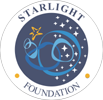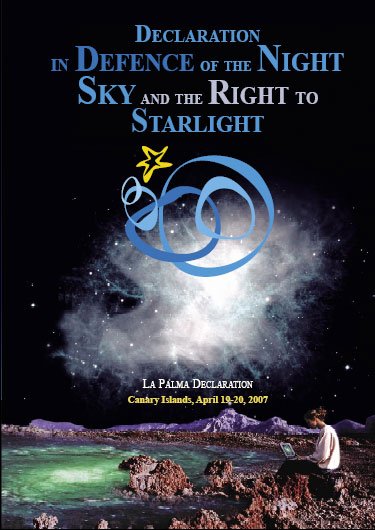Light Pollution - IAU General Assembly
Protecting Astronomical Sites and Increasing Global Awareness through Education
29-31, August 2012. Special Session (SpS17) XXVIII General Assembly of the International Astronomical Union in Beijing.
The primary responsibility for the disappearance of stars is people’s lack of knowledge. Recognizing the problem, studying its causes, and assessing options is part of the solution. Six of the 13 topics for the session will examine the impact of various approaches of education and public outreach on issues concerning light pollution and its impact on our world. To accomplish this, we invite presentations by ecologists, amateur and professional astronomers, professional educators at schools, universities, planetaria, science centers and nature centers, as well as people in the media, landscape astrophotography, the medical field and lighting design. We will include one or more papers on how to improve our handling of language and cultural barriers. We will also review progress being made by outreach and citizen-science programs such as “GLOBE at Night”, Global Astronomy Month’s “Dark Skies Awareness”, “One Star at a Time”, the “Starlight Initiative” and the educational resources offered through the “International Dark-Sky Association”. As such, the session topics will include:
- Media & Dark-Skies Images Worth a 1000 Words
- Public Outreach on Light Pollution by Amateur Astronomers
- Role of Planetaria & Science Centers in Outreach on Light Pollution
- Light-Pollution’s Effects on Wildlife & Health Issues
- Light-Pollution Education: The Role of the School to Change the Social Vision of this Global Problem
- Education through Global Star-Hunting & “Nights of Darkness” Campaigns
Protecting sites (including observatories) and slowing the encroachment of light pollution requires engaging the public on several levels. These actions include producing long-term sky brightness data intercomparable with broader public monitoring programs; taking opportunities to educate the public about the value of dark sky preservation; interacting with policy makers and public agencies ranging from localities to the UN to provide legal protection and enforcement for dark sky zones; and interacting with lighting engineers to define dark-sky preserving products and to encourage their deployment. Rapidly advancing technology and associated promotion is leading to deployment of blue-rich artificial light sources that threaten to impact a spectral region previously left relatively untouched. Exploring the nature, possible impact, and potential mitigation of this trend is a timely aspect of this session. With this in mind, the session topics will also include:
- Dark Skies Measurements for Education and Site Monitoring
- Light pollution Education and Protecting Observatory Sites
- Dark Sky Places, Starlight Reserves and Astro-Tourism
- Progress and Action Plan for Implementing IAU 2009 Resolution B5
- Spectra of Artificial Blue-Rich Sources
- Observational Studies Most Impacted by Contamination Below 500nm
- Astronomical Input to Lighting Industry Development; Prospects for Success
More information IAU SpS17
IAU XXVIII General Assembly
LOOKING FOR SOMETHING?


Starlight Initiative collaborates with the
PORTAL TO THE HERITAGE OF ASTRONOMYUpdates
- Curso de Guias Starlight 2012
- Global Astronomy Month (GAM 2012)
- Starlight - Covenant of Mayors Related Initiative
- El Montsec inicia el proceso para la certificación como Destino Turístico Starlight
- Light Pollution - IAU General Assembly
- Comments on EC Green Paper
- Starlight Tourist Destinations
- Alqueva - The First Starlight Destination
Starlight Finder
Starlight related links
![]()
Covenant of Mayors Related Initiative
![]()
Colaborating with IAU Working Group
![]()
IUCN Dark Sky Advisory Group
![]()
Dark Skies Awareness Project
![]()
Partnership Unesco-MaB
![]()
Member of the Knowledge Network
![]()
Instituto de Astrofísica de Canarias
 |
The Starlight Initiative is designed as an international action in defence of the values associated with the night sky and the general right to observe the stars. It is open to the participation of all scientific, cultural, environmental, and citizens' organizations... |
In partnership with: |
|
|


